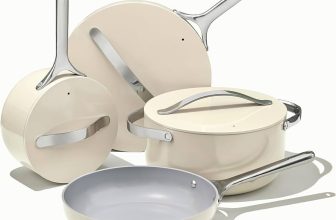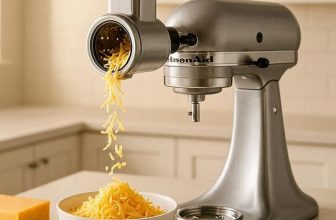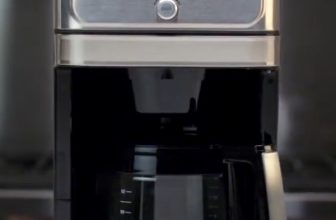What is a Slotted Spoon Used for?

What is a slotted spoon used for? A slotted spoon is used for straining or lifting solid foods out of liquids when cooking. It has perforations to allow liquid to drain away easily.
When you’re cooking and need to remove foods like vegetables or pasta from boiling water or oil while leaving the liquid behind, a slotted spoon is the perfect tool for the job. Its design helps you separate the food from excess liquid, making it a versatile utensil in the kitchen.
Whether you’re blanching vegetables, poaching eggs, or frying foods, a slotted ladle is a handy and practical tool that every home cook should have in their kitchen arsenal.
What is a Slotted Spoon Used for?
A slotted spoon is used for lifting food from hot liquids or draining excess sauce.
When you need to take out vegetables from boiling water, fried snacks from oil, or pasta from broth, a slotted spoon is your best option. It lets the water or oil drip back into the pot so your food is not soggy. Many people also use it to skim fat from soups or to separate solids from gravy. In short, this spoon makes cooking and serving much easier while keeping food clean and dry.
What is a Slotted Spoon?
A perforated spoon is a kitchen tool with holes that let liquids drain while keeping solid food on the utensil.
It looks like a regular serving spoon but with small holes or slots. These allow you to scoop out food while the liquid drains away. People use it for boiling, frying, or serving dishes with sauces. Most are stainless steel, but silicone or nylon versions are also available, safe for non-stick cookware. It’s one of the basic tools every home cook should have because it saves time and keeps food less watery.
For more details about slotted spoons and their uses, you can refer to Canzo Kitchenware.
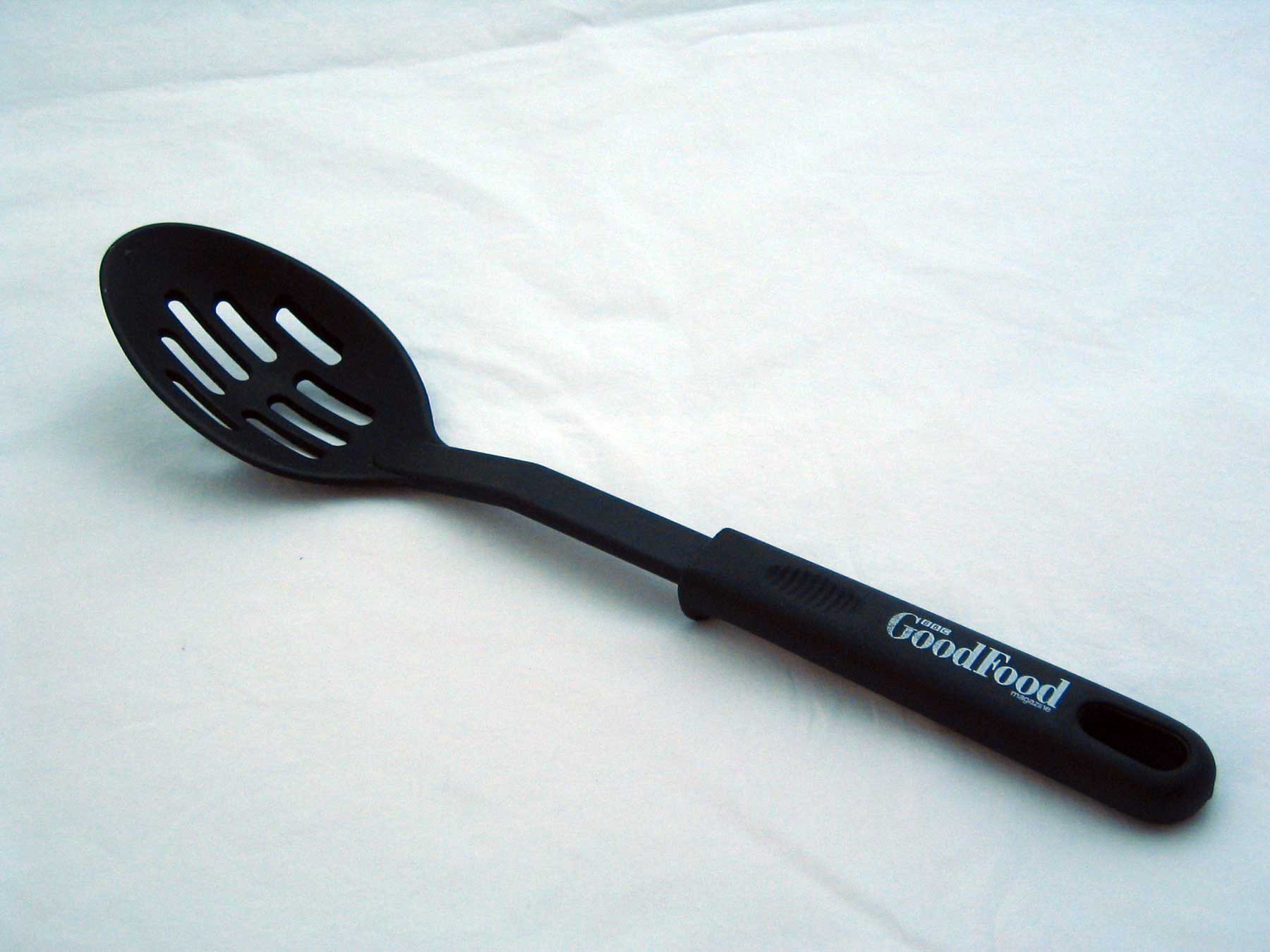
What is the Purpose of the Slotted Spoon?
The main purpose of a draining utensil is to separate liquids from solid foods easily.
It’s designed to make everyday cooking faster and neater. From pasta to fried foods, this tool ensures your meals are less oily or watery. It also adds safety, helping avoid splashes of hot oil or water.
The Slotted Spoon: A Kitchen Staple
The slotted spoon is a versatile kitchen tool used for a variety of purposes. Its key features include a long handle and a perforated bowl. The long handle allows for easy stirring and serving, while the bowl lets liquids drain away, making it ideal for retrieving foods from soups, stews, and sauces.
People commonly craft perforated spoons from stainless steel, but they also produce them in materials like silicone or nylon. These varieties offer benefits such as heat resistance and non-stick properties. Draining spoons are a must-have in any kitchen, essential for tasks like straining, scooping, and serving a wide range of dishes.
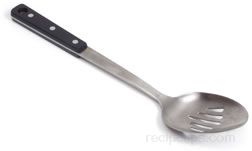
What Foods Do You Use a Slotted Spoon For?
You can use a perforated ladle for pasta, vegetables, fried foods, eggs, or even canned beans.
This utensil is ideal when cooking pasta, blanching vegetables, or frying snacks like pakoras or chicken nuggets. To remove poached eggs without breaking them, a draining spoon works perfectly. It’s also helpful for rinsing canned beans or lifting dumplings from broth. Essentially, it’s useful whenever food sits in liquid and needs to be lifted without carrying the liquid along.
When to Use a Slotted Spoon
Use a slotted spoon whenever you need to separate food from liquid while cooking or serving.
In daily cooking, you often deal with boiling, frying, or stewing foods. A slotted spoon becomes useful in each of these cases. For example, you can use it to take fried potatoes out of oil, boiled pasta out of water, or dumplings out of soup. You can even use it to serve curries without too much gravy. It saves you from using extra strainers and helps keep meals balanced.
When Would You Use a Slotted or Perforated Spoon Instead of a Solid Spoon?
Use a slotted or perforated spoon when you want food without extra liquid; use a solid spoon when you need both food and liquid.
For example, when serving pasta, fried fish, or dumplings, slotted spoons are best. When serving curries or soups, a solid spoon works better.
Benefits of Using a Slotted Spoon
A draining spoon helps drain liquids, keeps food crisp, and makes serving easier.
The biggest benefit is that you don’t serve extra oil or water on the plate. For fried items, it helps food stay crisp. For boiled vegetables, it prevents sogginess. It also saves time because you don’t need a full strainer for small tasks. This perforated utensil is easy to wash, long-lasting, and safe for both home and professional kitchens.
Slotted vs Perforated vs Solid Spoons
A slotted ladle has long slots, a perforated spoon has small holes, and a solid spoon holds liquids with food.
Solid spoons are best for serving curries or sauces, while draining utensils are for straining. A perforated spoon usually has many small holes, making it good for fine draining. A slotted spoon has wider gaps and works better for pasta or frying. Depending on the food, you can switch between them for best results.
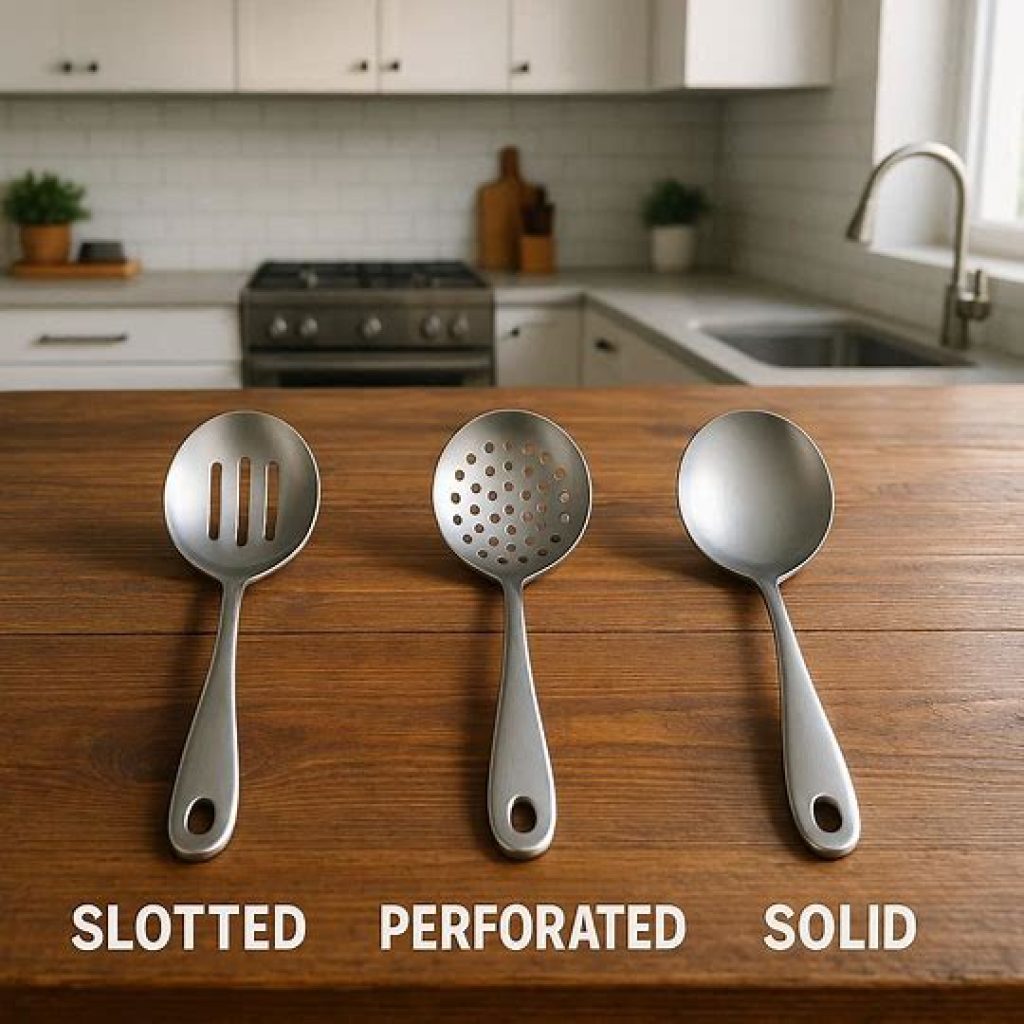
Slotted vs Perforated vs Solid Spoons
Perforated Spoon Uses
A perforated spoon is used for straining fine foods and skimming broth or sauces.
Because it has many small holes, it works best for foods like beans, boiled rice, or removing foam from soups. Chefs often use it when they want to separate small particles without losing food.
Versatile Uses Beyond The Basics
A slotted spoon is perfect for serving foods with excess sauce. It helps in skimming and degreasing dishes effectively.
Slotted Spoon for Deep Frying
A slotted spoon is used in frying to lift food and drain oil safely.
When frying, it’s risky to pour everything into a strainer. A slotted spoon lets you scoop food directly from the pan and remove extra oil at once. It also helps in removing small crumbs that can burn and spoil the oil. Always use a heat-resistant spoon so it doesn’t melt while frying.
What’s the Best Slotted Spoon for Removing Poached Eggs?
A wide, shallow, silicone or stainless steel slotted spoon is best for poached eggs.
Poached eggs are delicate, so you need a spoon that supports the whole egg while draining water. Silicone spoons prevent sticking, while stainless steel spoons give extra strength. Always scoop gently from under the egg and let water drain slowly before serving.
The Art Of Poaching And Blanching
Poaching and blanching are two cooking techniques that require delicacy and precision. The use of a perforated spoon can greatly ease the process and ensure delicate handling.
A slotted spoon is an essential tool for poaching and blanching. It allows you to easily remove delicate foods, such as eggs or vegetables, from hot water without damaging them. The slots in the spoon allow excess water to drain away, leaving only the food on the spoon.
Using a slotted ladle also ensures that delicate foods are handled gently. The spoon’s design allows you to scoop up food without crushing or breaking it, which is especially important for poached eggs or blanched vegetables.
| Poaching | Blanching |
|---|---|
| Fill a pot with water and bring to a simmer. | Fill a pot with water and bring to a boil. |
| Add vinegar to the water to help coagulate the egg whites. | Add salt to the water to help preserve the color of the vegetables. |
| Crack an egg into a small bowl and gently slide it into the water. | Add vegetables to the boiling water and cook for a short period of time. |
| Use a slotted ladle to remove the egg from the water. | Use a draining spoon to remove the vegetables from the water. |
Baking And Confectionery Applications
Ideal for separating solids from liquids, a perforated spoon is commonly used in baking and confectionery applications. This versatile tool is perfect for lifting and draining foods such as fried items or blanched vegetables from hot liquids.
| Slotted Spoon Usage in Baking and Confectionery | |
| • Use for dipping chocolates into melted chocolate. | • Perfect for decorating with precision on baked goods. |
Essential For Deep-frying
A slotted ladle is essential for deep-frying to drain excess oil. For safety, it prevents splatters and allows proper oil circulation. Maintaining oil quality by removing food particles and debris.
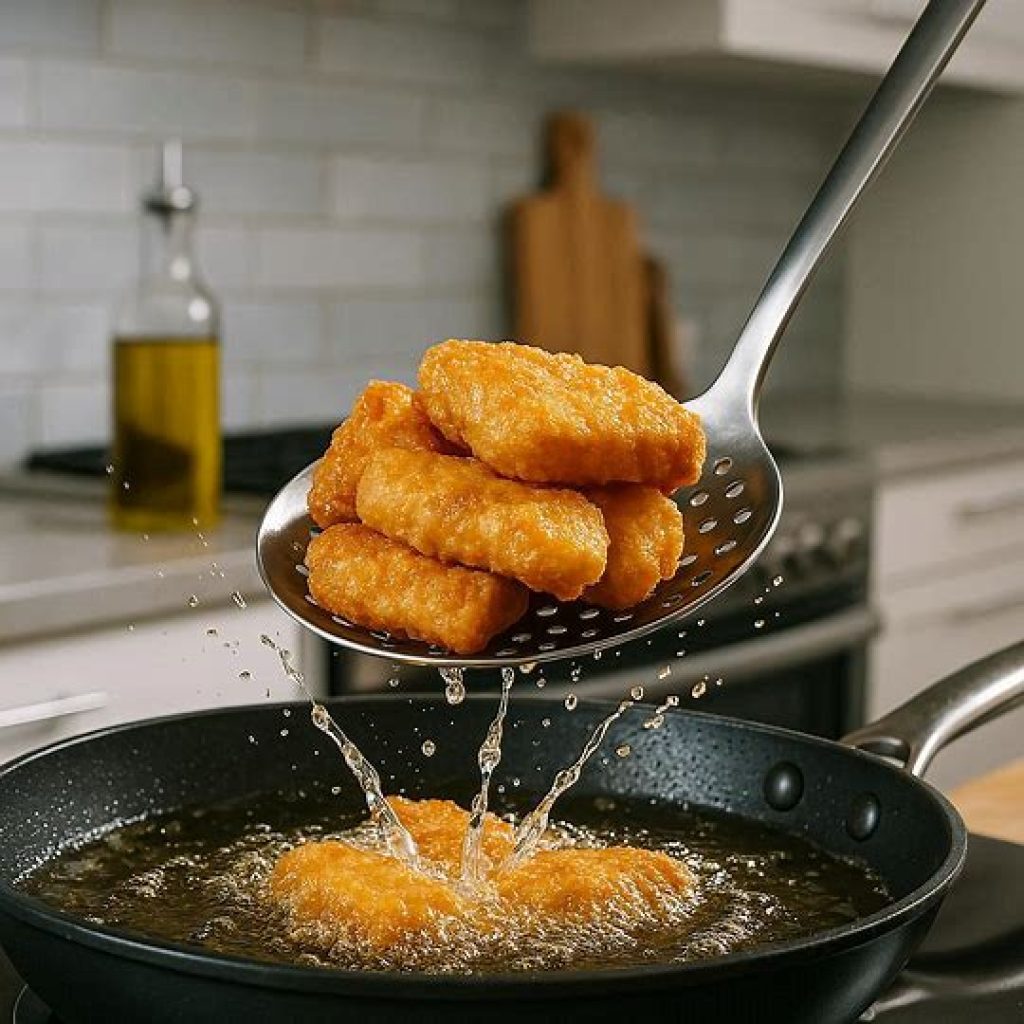
Essential For Deep-frying
Care And Maintenance Tips
When cleaning this perforated utensil, remember to hand wash it. Avoid using harsh abrasives that could damage the metal.
To extend its longevity, store the slotted ladle in a dry place. Consider hanging it or placing it in a utensil holder.
Maintaining Your Slotted Spoon
Wash the spoon with mild soap and keep it dry to prevent rust or damage.
Most slotted spoons are dishwasher safe, but hand washing is safer for long life. Avoid harsh scrubbing pads that can scratch the surface. If it’s stainless steel, wipe it dry after washing. For silicone or nylon, store them in a utensil holder so they don’t bend. With proper care, a good perforated spoon can last for years.
How Do I Clean a Slotted Spoon Properly?
Cleaning a perforated spoon is simple but important to keep it safe and long-lasting. Right after cooking, rinse the spoon under warm water to remove stuck food. For everyday cleaning, wash it with mild dish soap and a soft sponge, making sure to clean between the slots where grease often hides.
If the spoon is stainless steel, it’s usually dishwasher-safe, but check the manufacturer’s note before putting it in. For wooden or bamboo slotted spoons, avoid soaking in water too long, as it can cause cracks just hand wash and dry quickly with a towel. To remove stubborn stains or smells, you can scrub gently with baking soda paste or soak in a vinegar solution. Regular cleaning not only keeps your spoon hygienic but also makes it last longer for everyday cooking.
Selecting The Right Slotted Spoon
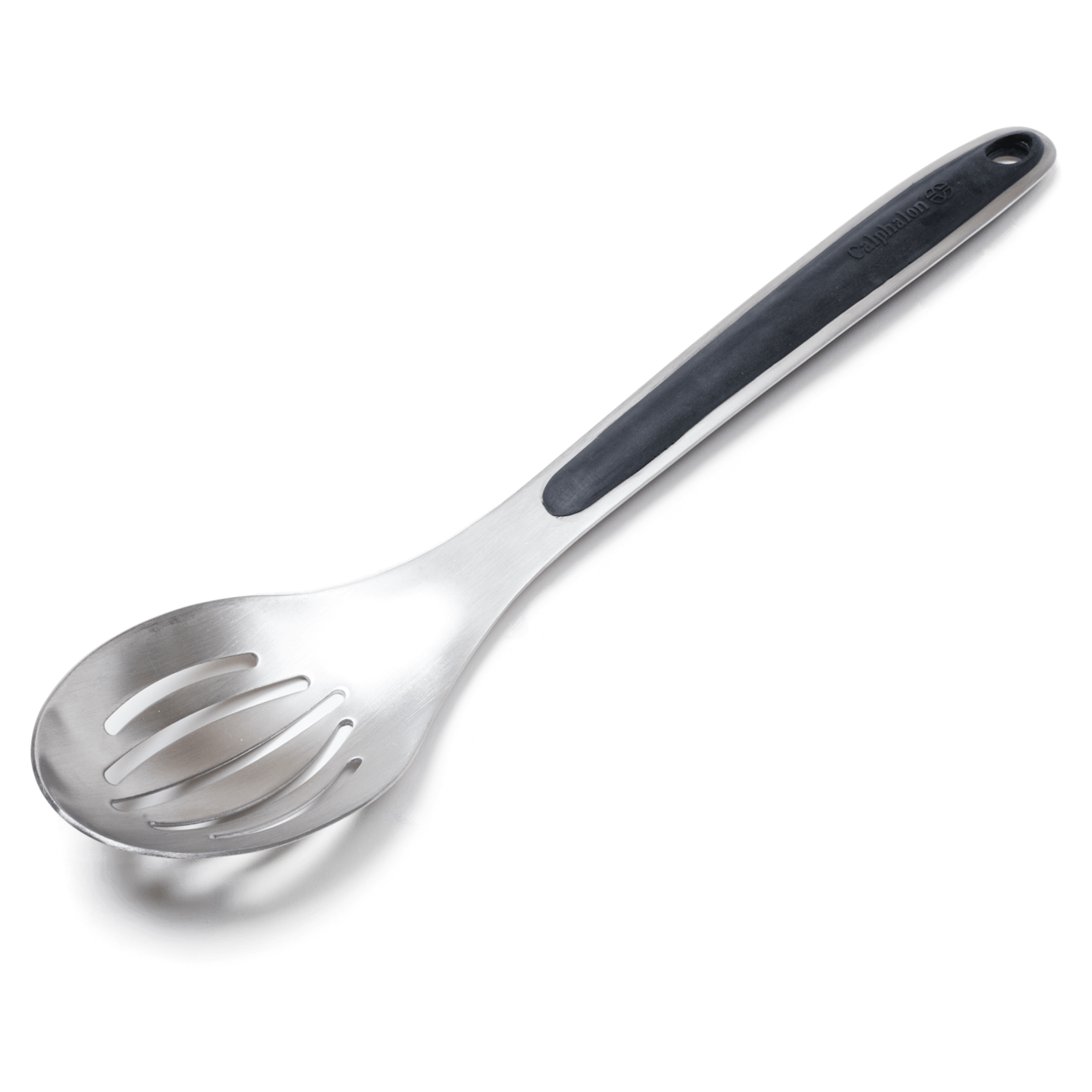
Choosing the Right Slotted Spoon
Pick a spoon size, shape, and material that fits your cooking style.
If you cook in deep pots, choose a long-handled spoon. For frying, a metal spoon is better, while silicone spoons are perfect for non-stick pans. Some spoons have wide bowls for pasta, while others have smaller ones for delicate foods like eggs. Always check for heat resistance and a comfortable grip, so cooking is safe and easy.
Serving Spoon with Holes
A serving spoon with holes is simply another name for a slotted spoon.
Some people call it a spoon with holes or serving spoon with holes. It does the same job draining liquids and serving solid food. You will often see them in buffet setups with pasta, salads, or fried snacks.
Frequently Asked Questions
What is a slotted spoon used for in cooking?
It’s used to lift solid food out of liquid, like pasta or fried snacks.
What foods can you remove with a slotted spoon?
Pasta, vegetables, poached eggs, fried foods, and beans.
Can you use a slotted spoon for frying?
Yes, it helps drain extra oil and keeps food crisp.
What is the difference between a slotted spoon and a perforated spoon?
A slotted spoon has wider slots; a perforated spoon has many small holes.
How do you use a slotted spoon?
A slotted spoon is used to lift food out of liquid or oil while draining the excess. You just scoop the food and let the holes strain out water, broth, or oil.
What spoon is best for removing poached eggs?
A wide, shallow slotted spoon made of silicone or steel.
Conclusion
A slotted spoon is a versatile kitchen tool for lifting and draining foods. It is commonly used for cooking pasta, serving vegetables, and removing fried foods from hot oil. Its perforated design allows liquids to drain away, making it an essential utensil in any kitchen.
Whether you’re a professional chef or a home cook, a slotted ladle is a must-have tool for everyday cooking tasks.


